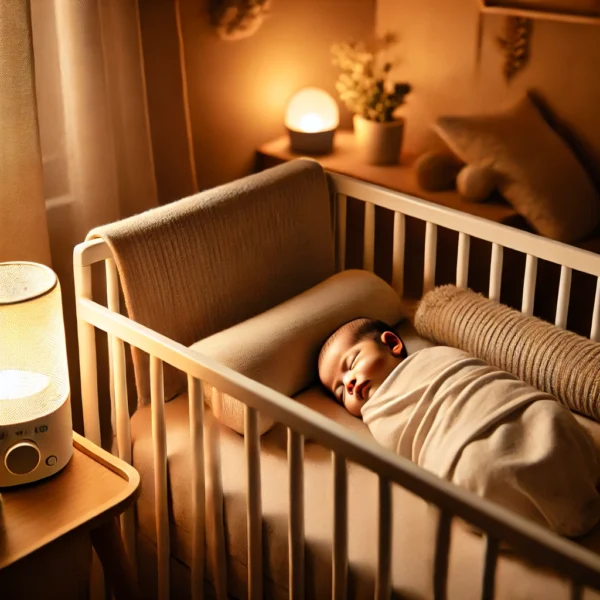Effective Sleep Training Techniques for Newborns

Sleep training for newborns is a gentle process focused on establishing healthy sleep habits from the start. While newborns (0-3 months) are too young for formal sleep training, there are steps you can take to better sleep. Here are some tips:
1. Create a Sleep-Friendly Environment
- Darkness: Keep the room dimly lit during nighttime to help your baby distinguish between day and night.
- White Noise: Soft sounds like white noise can soothe babies and mimic the womb's environment.
- Comfortable Temperature: Keep the room at a comfortable temperature (around 68-72°F).
2. Follow a Flexible Routine
- Day/Night Awareness: Keep days bright and active, and nights calm and quiet to set circadian rhythms.
- Short Pre-Bed Routine: A simple routine (diaper change, feeding, swaddle) can signal bedtime. Even for newborns, this can help create associations with sleep.
- Feeding Before Bed: Ensuring the baby is well-fed before sleep helps them settle more easily.
3. Swaddling
- Swaddling can mimic the snugness of the womb, helping babies feel secure and reducing startle reflexes that can wake them up.
4. Gradually Teach Self-Soothing
- Around 2-3 months, start laying the baby down drowsy but awake to encourage self-soothing skills, though newborns typically need help falling asleep.
5. Shorter Wake Times
- Newborns can only handle being awake for 45-90 minutes before getting overtired. Put your baby down to sleep after this period to avoid overtiredness, which makes it harder for them to sleep.
6. Respond to Cues
- Newborns communicate through cues like yawning, fussing, or rubbing their eyes. Responding to these cues helps prevent overstimulation and makes it easier for them to fall asleep.
7. Safe Sleep Practices
- Always place your baby on their back to sleep.
- Ensure the sleep space is free of pillows, blankets, and stuffed toys to reduce the risk of SIDS (Sudden Infant Death Syndrome).
8. Flexible Night Feedings
- Newborns need frequent night feedings, so while sleep training isn’t strict at this age, creating a calm and consistent environment helps them gradually sleep for longer stretches.
9. Building a Consistent Routine
- Bedtime Routine: Establishing a calming routine before bed can signal that it’s time to sleep. This could include a warm bath, gentle rocking, or a lullaby.
- Sleep Environment: A dark, quiet room with a safe crib space (no pillows, blankets, or stuffed toys) can help create a conducive environment for sleep.
- Same Sleep Location: As much as possible, place the baby in the same sleep environment (crib or bassinet), even for naps, to reinforce the association between that space and sleep.
10. Recognizing When They're Ready for Training
Before 3 months, the goal is not strict sleep training but rather helping your baby adjust to regular sleep patterns. Around 4 months, when babies' sleep cycles begin to mature, more structured sleep training methods like the "cry it out" or "Ferber method" may be gently introduced if desired.
Consistency, patience, and responding to your baby’s needs are key in these early months. As they grow, more structured sleep training techniques can be introduced.



